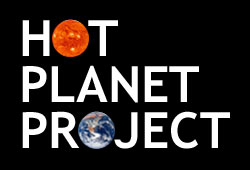The great frozen (for now) expanse of the Arctic is both a linchpin of climate change and a signifier of the effects of climate change. For the latter, look to the ice.
The ice north of Greenland is the oldest and thickest sea ice in the Arctic. Researchers had until now assumed that if and when the planet warms enough to melt all of the Arctic ice, it would be among the last areas of ice to go. That ice has broken up twice this year, during the freak warm spell in February and March and again this month, temporarily leaving open water off the north coast of Greenland. Here’s the Guardian’s story about this consequence of the Arctic’s rising temperatures and changing weather patterns.
As for the Arctic’s role in climate change effects elsewhere, a paper in Nature Communications shows that the reduced temperature gradient between the Arctic and the mid-latitudes promises to amplify extreme weather events, like droughts, by slowing weather systems.
The paper’s authors explain what this means:
…changes in atmosphere dynamics have the potential to cause rapid transitions at a regional scale leading to surprises for society. In summer synergistic effects between thermodynamic and dynamic drivers of extreme weather could act in the same direction to cause very-extreme extremes.
The Guardian’s take on the paper quotes a climate researcher unconnected with the paper, who puts it in less dry language:
“What happens in the Arctic doesn’t stay in the Arctic. By upsetting the energy balance of the
planet we are changing the temperature gradient between the equator and the pole. This in turn sets in motion major reorganisations of the flow patterns of the atmosphere and ocean,” said Chris Rapley, professor of climate science at University College London. “The consequences are emerging and they are disruptive, and likely to become even more profoundly so. We are on a journey and the destination doesn’t look good.”
There’s a lot we don’t know about these nonlinear planet-scale changes, which is why it is critically important to commit time and resources to climate science. And as with all things nonlinear, expect the unexpected.

